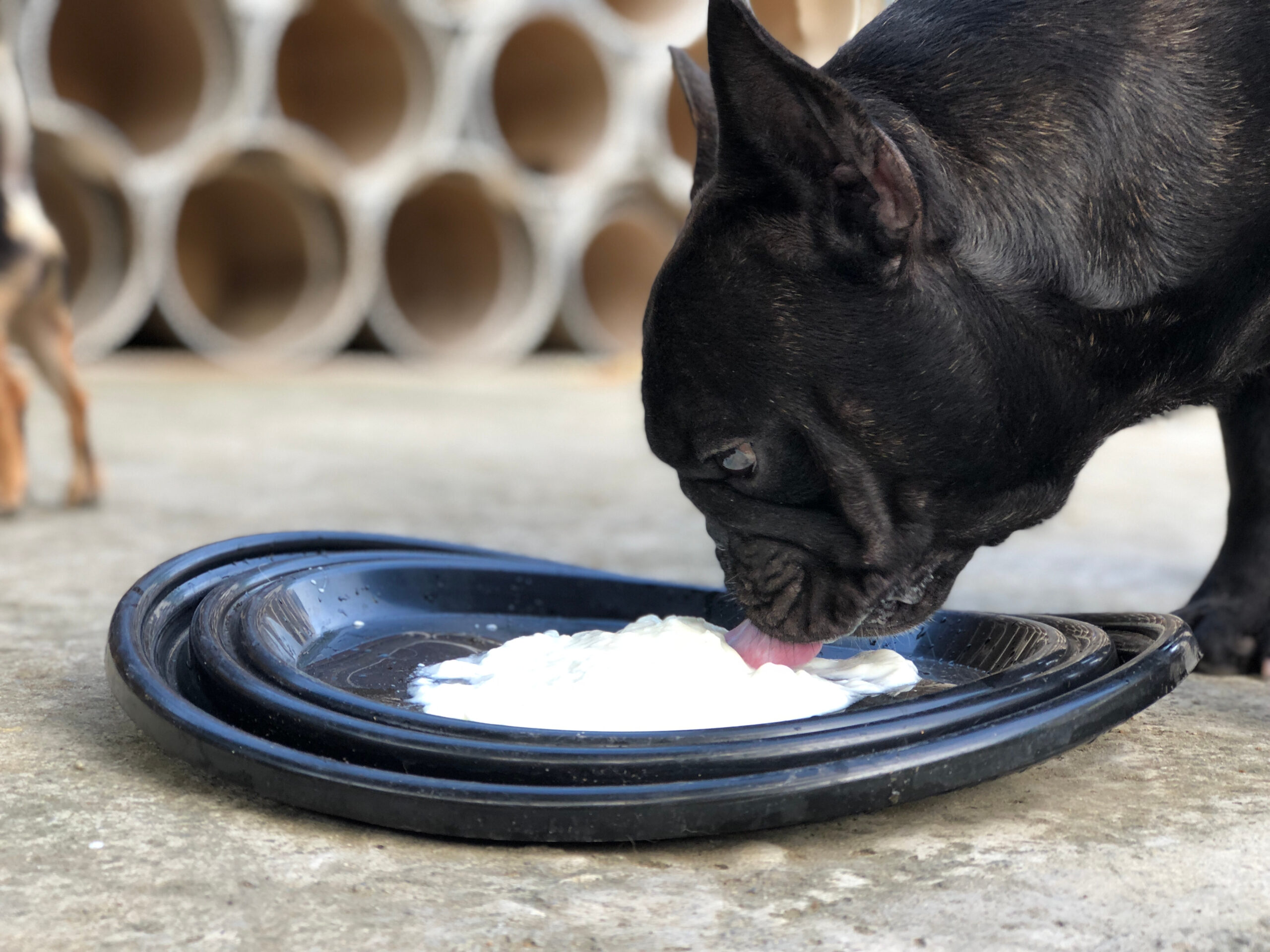Diarrhea in Dogs: What You Need To Know
Carpet cleaning not included.

Carpet cleaning not included.

It ain’t pretty, but it’s a fact of life.
Most dog owners are intimately familiar with the fact that dogs can get diarrhea—rendering doggy bags useless, and sidewalks downright apocalyptic.
Much like in humans, diarrhea in dogs can be caused by a number of factors. Most are fairly benign, but others are more serious.
So, how do you know whether your dog’s diarrhea is a temporary inconvenience, or a real cause for concern?
There are many reasons your dog could be having gastrointestinal distress. The most common causes are pretty innocuous, like eating too much grass or garbage—but there are other, more serious causes, like kidney disease or a blockage in the intestinal tracts that might be causing your pup to suffer from diarrhea.
Below are the most common triggers for your pup’s loose stool, ordered from least to most severe:
Garbage toxicosis, or “garbage gut”
Your dog has eaten too much (humans who’ve ever had “sour stomach” know the feeling), has scarfed down some unpleasant garbage, or has eaten a food that is just not good for them.
Antibiotics or other medications
These can disrupt your dog’s natural balance in their gut, leading to an upset stomach. FYI, this reaction is very common in humans, too.
Stress or anxiety
Being in a new environment—or confronted by loud noises, new animals, or any host of stimuli—can stress out your dog, giving them a nervous stomach.
Change in diet
New grub could upset your dog’s stomach. If you do make a change in your dog’s diet, make sure to slowly transition them to the new food.
Food intolerance
While not as severe as a full-blown allergy, this means that certain foods just don’t sit well with your dog.
Allergies
Just like humans, dogs can develop allergies to certain foods. One of the symptoms could be chronic diarrhea.
Poisonous plants or poisonous substances
Common household plants like aloe vera, philodendren, and sago palm are toxic to dogs, as are many common ingredients in household cleaning supplies.
Parasites
These loathsome, stomach-troubling critters include tapeworms might appear in your pup’s poop as small rice-like grains. In addition, hookworms, roundworms, and whipworms might cause diarrhea. These creepy crawlies are gross, but not a cause to panic. Your vet will probably prescribe a few rounds of deworming medicine, and your pup will be worm-free in no time.
Swallowing a foreign object
Dogs are notorious for eating everything in sight, including things they can’t actually digest, like balls, rocks, or socks. These foreign bodies can cause a blockage in the intestinal system, which in turn, could lead to diarrhea and vomiting.
Viruses
These include parvovirus, distemper, and coronavirus (no, not that coronavirus).
Bacterial infections
Salmonella, e. coli, or others.
Illnesses
such as liver or kidney disease, inflammatory bowel disease, pancreatitis, or even cancer.
Concerned that your dog’s symptoms are a sign of something concerning? Learn more about common dog diseases so you know what to look out for.
In most cases, diarrhea in dogs does not warrant a visit to a vet, but this depends on the frequency, the type of diarrhea your dog is having, and your general sense of your dog’s health.
Consult with your vet if your pet is suffering from diarrhea, and:
Diarrhea can be unpleasant for everyone involved, even when it doesn’t warrant a visit to the local animal hospital. The good thing is there are some things you can do to make your dog more comfortable (and your own life a bit more pleasant) until your dog’s tummy is back to normal.
You can try putting your dog on a 12–24 hour fast, with no food, and only a little bit of water. This will give their digestive tract some time to recover from whatever is irritating it.
After the fast, you can start introducing a bland diet, offering the following type of foods in small amounts:
Always consult with your veterinarian before administering any medications or starting your pet on a special diet.

If you’re squeamish (or just ate lunch) you may want to skip this section.
But for everyone else: Let’s get educational in a slightly unpleasant way! Our pups might not be able to tell us what ails them, but their poop often can. Factors like color, shape, and even smell can offer clues.
Normal dog poop (as you probably already know) is a chocolate brown. When you start seeing more textures and colors, this could be a sign of other health issues.
Some colors to watch out for:
In terms of shape, ideally, your dog’s stool should be round; firm, but with a slight give; and possessing a segmented appearance. The looser the stool is, the closer it is to diarrhea.
If your dog’s poop smells really, really foul, this is a sign they may have a worm infection. If your dog’s poop smells metallic, this could be a hint that they have blood in their stool, and they should be brought in to the vet for a check-up.
If you really want to become a master of your dog’s poop, you can learn a whole lot more here. Who knows, it might come in handy at trivia night…
Doggy tummies require proper nutrition to maintain proper digestion.
A well-balanced dog diet should be composed of 20-25% protein, around 14% fat, and 61-66% carbohydrates. Your dog’s food should also include minerals and vitamins such as iron, and sodium.
If you’re worried your pup isn’t getting everything they need from their packaged grub, look for the Association of the American Food Control Officials seal on the bag of dog food you normally buy. This regulatory body ensures that your dog’s food contains all the things it should—and none of the things it shouldn’t.
For more info on your dog’s ideal diet, click here
Dog diarrhea is no one’s idea of a good time. In fact, while researching and writing this piece, our team has had to utter the phrase “dog diarrhea” more than enough for several lifetimes.
While it’s inconvenient and a bit gross, your dog’s loose stool may or may not require a vet visit. Knowing what to be alert for can help you make an informed decision about whether professional help is necessary.
Speaking of vets—they can get expensive. Thankfully, Lemonade pet insurance for dogs is there to take the bite out of some of those bills. Click here to see what is covered by pet health insurance, and how it works.
Curious? Hit the button below to your pup a quote from Lemonade Pet—it only takes a few minutes.
A few quick words, because we <3 our lawyers: This post is general in nature, and any statement in it doesn’t alter the terms, conditions, exclusions, or limitations of policies issued by Lemonade, which differ according to your state of residence. You’re encouraged to discuss your specific circumstances with your own professional advisors. The purpose of this post is merely to provide you with info and insights you can use to make such discussions more productive! Naturally, all comments by, or references to, third parties represent their own views, and Lemonade assumes no responsibility for them. Coverage and discounts may not be available in all states.
Please note: Lemonade articles and other editorial content are meant for educational purposes only, and should not be relied upon instead of professional legal, insurance or financial advice. The content of these educational articles does not alter the terms, conditions, exclusions, or limitations of policies issued by Lemonade, which differ according to your state of residence. While we regularly review previously published content to ensure it is accurate and up-to-date, there may be instances in which legal conditions or policy details have changed since publication. Any hypothetical examples used in Lemonade editorial content are purely expositional. Hypothetical examples do not alter or bind Lemonade to any application of your insurance policy to the particular facts and circumstances of any actual claim.